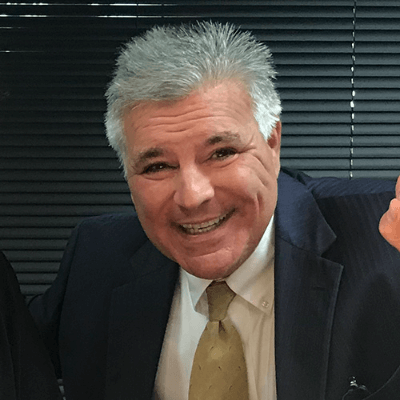Consumers may be waiting quite a while for a significant drop in mortgage interest rates. There has even been some chatter that the Fed may do a surprise increase in the fed funds rate.
Investors were betting big on Federal Reserve rate cuts at the start of 2024, wagering that central bankers would lower interest rates to around 4 percent by the end of the year from its current 5.25-5.5 stance. But after months of stubborn inflation and strong economic growth, the outlook is starting to look much less dramatic.
Market pricing now suggests that the fed funds rate will end the year at around 4.75 percent. That would mean Fed officials had cut rates two or three times from their current 5.3ish percent.
Policymakers are trying to strike a delicate balance as they contemplate how to respond to the economic moment. Central bankers do not want to risk tanking the job market and causing a recession by keeping interest rates too high for too long. But they also want to avoid cutting borrowing costs too early or too much, which could prod the economy to re-accelerate and inflation to take even firmer root. So far, officials have maintained their forecast for 2024 rate cuts while making it clear that they are in no hurry to2024 rate cuts while making it clear that they are in no hurry to lower them.
Here’s what policymakers are looking at as they think about what to do with interest rates, how the incoming data might reshape the path ahead, and what that will mean for markets and the economy.
What ‘higher for longer’ means.
Higher for longer often means one or both of two things. Sometimes, the phrase refers to the near term: The Fed might take longer to start cutting borrowing costs and proceed with those reductions more slowly this year. Other times, it means that interest rates will remain notably higher in the years to come than was normal in the decade leading up to the 2020 pandemic.
When it comes to 2024, top Fed officials have been very clear that they are primarily focused on what is happening with inflation as they debate when to lower interest rates. If policymakers believe that price increases are going to return to their 2 percent goal, they could feel comfortable cutting even in a strong economy.
When it comes to the longer term, Fed officials are likely to be more influenced by factors like labor force growth and productivity. If the economy has more momentum than it used to, perhaps because government infrastructure investment and new technologies like artificial intelligence are kicking growth into higher gear, it might be the case that rates need to stay a little bit higher to keep the economy operating on an even keel.
In an economy with sustained vigor, the rock-bottom interest rates that prevailed during the 2010s might prove too low. To use the economics term, the “neutral” rate setting that neither heats up nor cools down the economy might be higher than it was before Covid.
Sticky inflation in 2024
A few Fed officials have argued recently that interest rates could remain higher this year than the central bank’s forecasts have suggested.
Policymakers projected in March that they were still likely to lower borrowing costs three times in 2024. But Neel Kashkari, one of the presidents of the Federal Reserve Bank said he could imagine a scenario in which the Fed did not lower interest rates at all this year. And Raphael Bostic, the Atlanta Fed president, said he doesn’t see a rate cut until November or December.
The caution comes after inflation — which came down steadily throughout 2023 — has moved sideways in recent months. And with new strains surfacing, including a pickup in gas prices, mild pressure on supply chains after a bridge collapse in Baltimore and housing price pressures that are taking longer than expected to fade from official data, there’s a risk that the stagnation could continue.
Still, many economists think that it is too early to worry about inflation’s stalling. While price increases were quicker in January and February than many economists had expected, that could have been partly because of seasonal quirks, and they came after meaningful progress.
The recent inflation data do not “materially change the overall picture,” Jerome H. Powell, the Fed chair, said recently, even as he signaled that the Fed would be patient before cutting rates.
Over the Longer Term
Some economists — and, increasingly, investors — think that interest rates could stay higher in coming years than Fed officials have predicted.
William Dudley, a former president of the Federal Reserve Bank of New York, is among those who think that rates could remain more elevated. He noted that the economy had been expanding quickly despite high rates, suggesting that it can handle higher borrowing costs.
“If monetary policy is as tight as Chair Powell is arguing, then why is the economy still growing at a rapid pace?” Mr. Dudley said.
And Jamie Dimon, the chief executive of JPMorgan Chase, recently stated that big societal changes — including the green transition, supply chain restructuring, rising health-care costs and increased military spending in response to geopolitical tensions — could “lead to stickier inflation and higher rates than markets expect.” He said the bank was prepared for “a very broad range of interest rates, from 2 percent to 8 percent or even more.”
Borrowing could be more expensive
If the Fed does leave interest rates higher this year and in years to come, it will mean that the cheap mortgage rates like those that prevailed in the 2010s are not coming back. Likewise, credit card rates and other borrowing costs would most likely remain higher.
As long as inflation is not stuck, that could be a good sign: Super low rates were an emergency tool that the Fed was using to try to revive a flailing economy. If they don’t come back because growth has more momentum, that would be a testament to a more robust economy.
But for would-be homeowners or entrepreneurs who have been waiting for the cost of borrowing to come down, that could provide limited comfort


